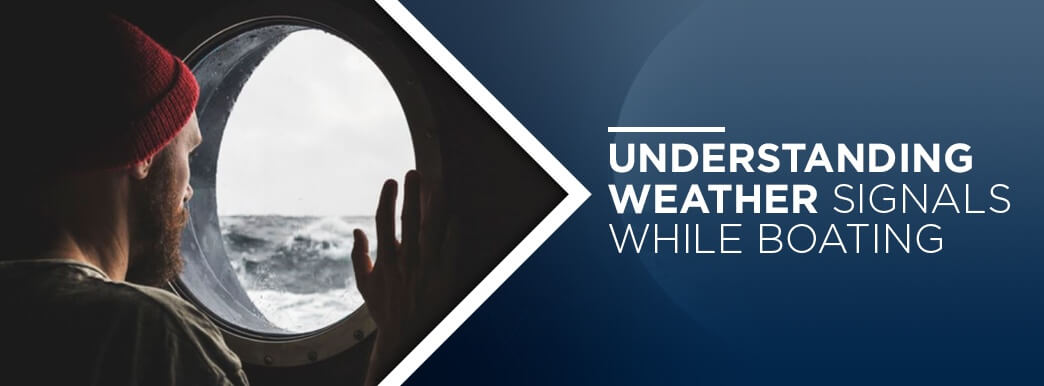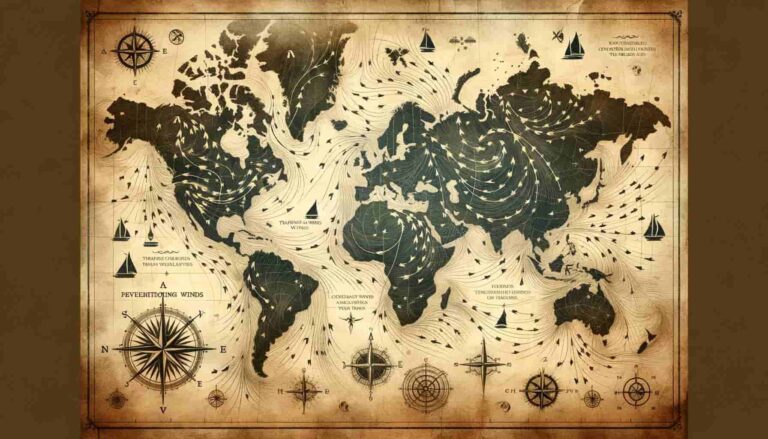Weather Watching: Deciphering Weather Patterns for Safe Sailing
Decipher weather patterns for safe sailing with accurate and concise weather watching techniques. Weather patterns play a crucial role in determining the safety of sailing activities.
By deciphering these patterns, sailors can anticipate and prepare for potential risks at sea. Understanding the nuances of weather forecasting, including cloud formations, wind directions, and atmospheric pressure changes, can greatly enhance the safety of sailing adventures. This article will explore the key aspects of weather watching and provide valuable insights on how to interpret weather patterns effectively.
By mastering these skills, sailors can make informed decisions, plan their voyages accordingly, and ensure a safe and enjoyable experience on the water. So, read on to discover the secrets of decoding weather patterns for safe sailing.
Importance Of Weather Watching For Sailors
Decoding weather patterns is crucial for sailors for safe sailing. Understanding weather conditions can help navigate through potential hazards and ensure a smooth and secure voyage.
The Role Of Weather Patterns In Sailing Safety
Sailing is an exhilarating adventure that demands careful planning and utmost caution. One of the crucial factors that can make or break a sailing trip is the weather. Experienced sailors understand the significance of weather patterns and how they directly impact the safety of their journey.
By deciphering weather conditions, sailors can navigate the waters with confidence and ensure a smooth sailing experience. Let’s explore the importance of weather watching for sailors and how it contributes to their safety.
How Understanding Weather Conditions Can Help In Navigation
Weather conditions play a vital role in determining the success of a sailing expedition. Here are some key ways in which understanding weather conditions can help sailors navigate the waters safely:
- Wind direction and speed: Knowing the wind direction and speed can assist sailors in planning their routes more effectively. They can harness the power of wind to their advantage, adjusting their sail plan and adjusting their course accordingly.
- Storms and severe weather: Keeping a close eye on the weather forecast can help sailors prepare for potential storms or severe weather conditions. By avoiding these hazardous situations, they can prevent accidents and ensure the safety of everyone on board.
- Tides and currents: Understanding the impact of tides and currents is crucial for sailors. By monitoring these factors, they can plan their departure and arrival times accordingly, optimizing their speed and avoiding hazardous areas affected by strong currents.
- Visibility: Poor visibility due to fog, haze, or heavy rain can pose significant risks for sailors. By monitoring weather conditions, they can anticipate reduced visibility and take appropriate measures, such as using radar or adjusting their speed to ensure safe navigation.
Key Weather Elements To Monitor For Safe Sailing
When it comes to weather watching for sailors, there are specific weather elements that hold utmost importance. Monitoring these elements can significantly contribute to the safety of a sailing trip. Here are the key weather elements that sailors must pay close attention to:
- Barometric pressure: Changes in barometric pressure can indicate upcoming weather systems. Falling pressure may signal approaching storms, while rising pressure suggests improving weather conditions.
- Cloud formations: Understanding different cloud formations can provide valuable insights into impending weather changes. Dark, towering cumulonimbus clouds often signify thunderstorms, while stratocumulus clouds might indicate stable weather patterns.
- Wave height and swell: Monitoring the height of waves and swells is crucial for sailboats. Large waves and swells can make sailing dangerous, causing instability and potential damage to the vessel. Sailors should avoid areas with excessively high waves to ensure a safe journey.
- Temperature changes: Sudden temperature drops or rises can indicate approaching weather fronts. These temperature changes can affect the wind patterns and overall weather conditions, necessitating sailors to adapt accordingly.
Weather watching is paramount for ensuring the safety of sailors. By understanding weather patterns, sailors can navigate with confidence, plan their routes intelligently, and avoid potential dangers. Weather elements such as wind, storms, tides, visibility, barometric pressure, cloud formations, wave height, swell, and temperature changes all play significant roles in sailing safety.
By closely monitoring these elements, sailors can enhance their overall sailing experience and safeguard themselves and their crew from unnecessary risks. So, always keep an eye on the weather forecast and embark on your sailing adventure with confidence!
Interpreting Weather Forecasts For Sailing
Deciphering weather patterns is crucial for safe sailing. Learn how to interpret weather forecasts accurately for a smooth sailing experience.
Weather Watching: Deciphering Weather Patterns For Safe Sailing
Ahoy, fellow sailors! When it comes to embarking on a sailing adventure, one of the crucial skills to master is weather interpretation. Understanding meteorological terms and symbols, analyzing weather charts, and utilizing technology are key components in predicting and preparing for the conditions you may encounter at sea.
We’ll delve into the art of interpreting weather forecasts for sailing, equipping you with the knowledge needed to stay safe and sail smoothly. So grab your compass and let’s set sail on this weather-watching journey!
Understanding Meteorological Terms And Symbols
To make sense of weather forecasts as a sailor, it is vital to familiarize yourself with common meteorological terms and symbols. This knowledge empowers you to decode the forecast and anticipate weather changes, helping you plan your sailing route more effectively.
Here are a few essential terms and symbols to keep in mind:
- High pressure (H): Indicates stable conditions with clear skies and light winds.
- Low pressure (L): Suggests unstable conditions with cloud formations and stronger winds.
- Wind direction and speed: Arrow symbols illustrate wind direction, while corresponding numerical values represent wind speed.
- Fronts: Represented by lines on weather charts, fronts indicate boundaries between different air masses, often leading to changes in weather conditions.
Analyzing Weather Charts For Sailing Predictions
Weather charts provide a visual representation of atmospheric conditions, offering valuable insights to sailors. By analyzing these charts, you can form predictions about upcoming weather and make informed decisions regarding your sailing plans. Here’s what to look out for when analyzing weather charts:
- Isobars: Lines connecting regions with equal atmospheric pressure. Closer isobars demonstrate stronger winds, outlining areas to avoid or approach with caution.
- Fronts and pressure systems: Identifying where fronts and pressure systems intersect on the chart helps determine the likely weather conditions.
- Wind arrows: These arrows indicate wind direction and strength, enabling you to anticipate potential challenges or favorable conditions.
Utilizing Technology For Accurate Weather Forecasts
In today’s digital age, technology offers a treasure trove of resources for obtaining accurate weather forecasts. With the help of various online platforms and mobile apps, you can access real-time weather conditions and personalized predictions tailored to your location. Here are some useful technological tools to aid your weather forecasts:
- Weather websites and apps: Platforms such as NOAA’s National Weather Service, Windy, and PredictWind deliver up-to-date weather data, including wind speed, precipitation, and storm tracking.
- Satellite imagery: Utilizing satellite imagery allows you to visualize cloud patterns and weather systems, helping you anticipate weather changes in advance.
Remember, relying on a single forecast source may be risky, so it’s always wise to cross-reference multiple platforms and consult local experts.
When it comes to interpreting weather forecasts for sailing, understanding meteorological terms and symbols, analyzing weather charts, and utilizing technology are the three pillars of success. Knowing how to read the signs of changing weather conditions will enable you to make informed decisions and ensure a safe and enjoyable sailing experience.
So, set sail with confidence, fellow mariners, and let the winds guide you towards new horizons!
Identifying Safe Sailing Conditions
Discovering ideal sailing conditions involves interpreting weather patterns to ensure safety on the sea. By carefully observing and analyzing the weather, sailors can navigate the waters with confidence, avoiding any potential risks that may arise.
Recognizing Favorable Wind Patterns For Sailing
When it comes to safe sailing conditions, recognizing favorable wind patterns is crucial. Here are key factors to consider:
- Wind direction: Look for consistent winds blowing from the desired direction, typically perpendicular to the boat’s path.
- Wind speed: Optimal sailing conditions occur with moderate winds, around 8-15 knots. Too little or too strong winds can hamper control and safety.
- Steady winds: Ensure the winds are relatively steady, preferably without sudden gusts or lulls, as they can impact the boat’s balance and maneuverability.
- Avoid adverse conditions: Be aware of weather patterns such as thunderstorms, hurricanes, or strong frontal systems, which can bring erratic winds and unsafe conditions.
Assessing Sea State And Wave Heights
Assessing sea state and wave heights is vital for determining safe sailing conditions. Consider the following factors:
- Wave height: Look for moderate wave heights, ideally around 1-4 feet, as calm seas are more suitable for smooth and comfortable sailing.
- Wave direction: Waves should come from a favorable direction, allowing for a comfortable ride and minimizing the risk of capsizing or broaching.
- Wave frequency: Opt for waves with regular frequency rather than chaotic, choppy conditions that can make sailing challenging and increase the chances of accidents.
- Swell patterns: Monitor for long-period swells, which can produce large and unpredictable waves that may pose hazards to smaller vessels.
Monitoring Visibility And Fog Conditions
Monitoring visibility and fog conditions is essential to ensure clear navigation and prevent potential collisions. Keep these factors in mind:
- Visibility range: Sailing in good visibility is crucial for spotting other vessels, obstacles, or changes in weather conditions. Aim for a minimum range of 1-3 nautical miles.
- Fog density: Dense fog severely impairs visibility, making it difficult to navigate safely. It’s best to delay sailing until fog dissipates or lifts.
- Navigation aids: Rely on electronic navigation systems, radar, and AIS (Automatic Identification System) to enhance situational awareness during periods of low visibility.
- Safety precautions: Equip the boat with proper fog signaling devices such as fog horns and radar reflectors to alert nearby vessels about your presence.
Remember, understanding these elements and observing them closely will help you identify safe sailing conditions, ensuring a pleasant and secure experience on the water. Stay vigilant and prioritize safety above all else. Happy sailing!
Preparing For Changing Weather Conditions
Prepare for changing weather conditions with weather watching techniques to decipher patterns for safe sailing. Stay informed and make informed decisions on water with a keen eye on the ever-changing weather.
Developing A Comprehensive Sailing Plan:
- Before setting out on a sailing trip, it is essential to create a comprehensive sailing plan. This plan will help you stay prepared and navigate through changing weather conditions effectively. Consider the following steps when developing your plan:
- Research the weather patterns: Gain a thorough understanding of the weather patterns in the area you plan to sail. Consult weather forecasts, look for trends, and gather as much information as possible before setting sail.
- Determine safe anchorage points: Identify safe harbors or anchorage points along your planned route. These sheltered areas can provide refuge during sudden weather changes or storms.
- Create backup options: Prepare alternative routes or contingency plans in case of unexpected weather developments. Having backup options can help you stay flexible and adapt to changing conditions.
Adapting To Unexpected Weather Changes At Sea:
- As any experienced sailor knows, weather conditions at sea can quickly shift and change. Being able to adapt to these unexpected weather changes is crucial for a safe sailing experience. Here are a few tips to help you navigate through sudden weather shifts:
- Monitor weather updates: Stay vigilant and keep a close eye on weather updates throughout your journey. Utilize reliable weather forecasting services or apps to stay informed about any potential changes in conditions.
- Adjust your sails and course: Be prepared to make necessary adjustments to your sails and course when faced with adverse weather. Reevaluate your planned route and consider altering your trajectory to avoid potentially dangerous areas.
- Stay calm and communicate: Maintain a calm demeanor in the face of unexpected weather changes. Communicate with your crew, discuss the situation, and collaborate on the best course of action. Clear and efficient communication is essential for everyone’s safety.
Navigating Through Storms And Severe Weather Events:
- Although avoiding storms and severe weather events should always be the priority, sometimes they cannot be entirely avoided. In such situations, proper navigation becomes pivotal to minimize risks and ensure the safety of your crew. Here are some guidelines to help you navigate through storms and severe weather:
- Seek shelter: If possible, seek shelter in a safe harbor or anchor in a protected area before a storm hits. This will provide a stable location for you to endure the bad weather and wait for conditions to improve.
- Reduce sail area: To maintain control and prevent excessive stress on your vessel, reduce sail area by reefing or furling. This will help you manage the strong wind and turbulent seas more effectively.
- Maintain course awareness: Continuously monitor your vessel’s position relative to your intended course. GPS systems and navigation tools are invaluable instruments to ensure you maintain the right trajectory amidst challenging conditions.
Remember, unpredictable weather is an inherent risk in sailing. By developing a comprehensive sailing plan, adapting to unexpected changes, and navigating through storms diligently, you can enhance safety and protect the well-being of everyone on board. Happy sailing!
Using Weather Apps And Tools For Sailing
Learn how to decode weather patterns and ensure safe sailing with the help of weather apps and tools designed specifically for sailors. Stay prepared and make informed decisions for an enjoyable and secure sailing experience.
Are you a sailing enthusiast looking to make informed decisions about weather conditions before setting sail? Look no further than weather apps and tools designed specifically for sailors. With the help of satellite imagery, radar technology, and real-time weather data, these handy resources can provide valuable insights to ensure a safe and enjoyable sailing experience.
Top Weather Apps For Sailors:
- SailGrib Weather Routing (iOS, Android): This comprehensive app offers a range of features, including advanced weather routing, global weather forecasts, and customized alerts. Sailors can make better decisions by accessing accurate wind, wave, and current information in real-time.
- Windy (iOS, Android): Known for its user-friendly interface and detailed weather visualization, Windy provides sailors with an extensive range of weather models and overlay options. From wind direction and speed to swell height and precipitation, this app offers a wealth of information to plan your journey effectively.
- PredictWind (iOS, Android): Trusted by professional sailors worldwide, PredictWind delivers high-resolution weather forecasts, real-time observations, and satellite imagery. The app’s powerful tools, such as the wind forecast model and weather routing capabilities, allow sailors to determine the most favorable sailing conditions.
- Windfinder (iOS, Android): Whether you are planning a coastal trip or setting sail on open waters, Windfinder offers accurate weather forecasts for locations worldwide. This user-friendly app provides essential information on wind direction, wind speed, tide times, and wave heights, ensuring sailors have all the details at their fingertips.
Utilizing satellite imagery and radar technology:
- Satellite imagery: Weather apps equipped with satellite imagery provide sailors with a visual representation of cloud cover, storms, and other weather patterns. By analyzing these images, sailors can anticipate changes in weather conditions and plan their sailing routes accordingly.
- Radar technology: Radar technology allows sailors to detect and track precipitation, storms, and other atmospheric disturbances. Weather apps utilizing radar technology provide real-time updates, ensuring sailors can navigate away from potentially hazardous weather systems.
Accessing real-time weather data while on the water:
- Real-time weather data: Some weather apps offer the capability to receive real-time weather data while on the water, providing sailors with the most up-to-date information. By leveraging this feature, sailors can adapt to changing conditions and make necessary adjustments to their course or itinerary.
Weather apps and tools designed for sailors are essential resources for planning safe and enjoyable sailing excursions. With features like satellite imagery, radar technology, and real-time weather data, these apps provide sailors with valuable insights to make informed decisions about their journeys.
Whether you are a seasoned sailor or just starting out, incorporating these weather tools into your sailing routine can greatly enhance your overall experience on the water.
Safety Measures For Handling Adverse Weather
Weather patterns can be unpredictable, making it crucial for sailors to decipher and monitor changing conditions. By carefully observing weather patterns, sailors can take the necessary safety measures to handle adverse weather and ensure a safe sailing experience.
As a sailor, it is crucial to be prepared for adverse weather conditions to ensure your safety and the safety of your crew. Implementing storm protocols and emergency procedures, learning techniques for handling strong winds and heavy rain, and knowing how to seek shelter and anchor in rough conditions are essential skills that every sailor should possess.
In this section, we will delve into these safety measures in more detail to help you navigate through challenging weather scenarios.
Implementing Storm Protocols And Emergency Procedures:
- Stay updated: Monitor weather forecasts regularly to stay informed about any approaching storms or severe weather conditions.
- Develop a storm plan: Create a detailed plan that outlines the steps to be taken when a storm is imminent, including assigning responsibilities to different crew members.
- Secure loose items: Ensure that all loose items on deck or below are properly secured to prevent them from becoming hazards in rough weather.
- Reinforce lifelines and safety harnesses: Double-check the integrity of lifelines and safety harnesses, and make sure they are in good condition to prevent accidents during strong winds or heavy rain.
- Reduce sail area: Reef sails or change to smaller sails when wind speeds increase to maintain control of the vessel. Always remember that it’s better to be under-sailed than over-sailed in adverse conditions.
- Prepare emergency equipment: Have emergency equipment readily accessible, including life jackets, flares, a first aid kit, and a well-stocked ditch bag in case you need to abandon ship.
Techniques For Handling Strong Winds And Heavy Rain:
- Proper steering technique: In strong winds, maintain control of the vessel by steering downwind or slightly off the wind. Avoid excessive rudder movements, which can result in a loss of control.
- Heaving to: If conditions become too dangerous, heaving to is a technique where the boat is intentionally put into a stable position to wait out the storm. This technique can help mitigate the effects of strong winds and heavy rain.
- Feathering the sails: If sailing upwind in strong winds, feathering the sails by slightly easing the sheets can reduce heeling and maintain better control.
- Keeping a lookout: Assign a crew member to keep a lookout for potential hazards, such as floating debris or other vessels, especially in reduced visibility caused by heavy rain.
Seeking Shelter And Anchoring Strategies In Rough Conditions:
- Identify safe havens: Familiarize yourself with potential safe havens along your route, such as well-protected anchorages or marinas, where you can seek shelter during adverse weather conditions.
- Proper anchoring technique: When anchoring in rough conditions, use a storm anchor or deploy additional anchors to increase holding power. Ensure that your anchor is properly set and regularly monitor your position.
- Utilize natural shelters: If no established anchorages are available, consider utilizing natural shelters, such as coves, cliffs, or sandbars, to protect your vessel from strong winds and heavy rain.
- Stay clear of hazards: When seeking shelter, be mindful of any potential hazards, such as shallows, reefs, or other navigational dangers, which may be obscured during rough weather. Plan your approach carefully to avoid these obstacles.
Remember, your safety and the safety of your crew should always be the top priority when sailing. By implementing storm protocols and emergency procedures, learning techniques for handling strong winds and heavy rain, and knowing how to seek shelter and anchor in rough conditions, you will be better equipped to handle adverse weather scenarios and ensure a safe sailing experience.

Credit: www.boatingsafetymag.com
Frequently Asked Questions For Weather Watching: Deciphering Weather Patterns For Safe Sailing
How Do You Identify Weather Patterns?
To identify weather patterns, meteorologists analyze data from weather stations, satellites, and radar.
How Do Sailors Predict The Weather?
Sailors predict weather by observing cloud formations, winds, and changes in air pressure using weather instruments.
What Weather App Do Sailors Use?
Sailors often use weather apps like Windy, FishWeather, SailFlow, or Windfinder for accurate weather forecasts.
What Is A Good Source Of Weather Forecast Information For A Boater?
A reliable source for boaters’ weather forecast information is the National Weather Service.
Conclusion
Understanding weather patterns is crucial for safe sailing. By learning how to decipher these patterns, sailors can make informed decisions and reduce the risk of encountering dangerous conditions at sea. Monitoring barometric pressure, wind direction, and cloud formations can provide valuable insights into upcoming weather conditions.
Additionally, using weather forecasting tools and technology can further enhance sailors’ ability to predict and prepare for changing weather patterns. It is important to remember that weather can be unpredictable, so continuous monitoring and adaptation are essential. By staying informed and using this knowledge to their advantage, sailors can enjoy a safe and enjoyable experience on the water.
So, whether you’re a seasoned sailor or a beginner, taking the time to understand and interpret weather patterns is an invaluable skill that will contribute to a successful and safe sailing adventure. Stay informed, stay safe, and happy sailing!








